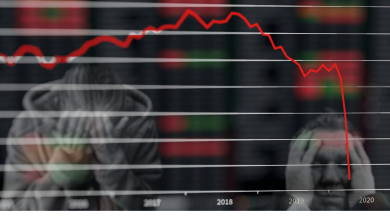Bill Introduced in Congress to Put the US Back on a Gold Standard

A bill introduced in the US House would put the American financial system back on a gold standard.
Rep. Alex Mooney (R-WV) introduced HR9157. Titled the Gold Standard Restoration Act, the legislation would peg the dollar to a fixed weight of gold.
The gold standard would protect against Washington’s irresponsible spending habits and the creation of money out of thin air,” Rep. Mooney said in a statement. “Prices would be shaped by economics rather than the instincts of bureaucrats. No longer would our economy be at the mercy of the Federal Reserve and reckless Washington spenders.”
Under the proposed law, the US Treasury and the Federal Reserve would have 30 months to publicly disclose all gold holdings and gold transactions over the last 60 years. At that point, the dollar would be pegged to a fixed weight of gold at the then-market price. Federal Reserve notes would become fully redeemable for gold at the new fixed price. The Treasury and its gold reserves would backstop the Federal Reserve Banks as guarantors.
Supporters of the measure say it would help get runaway inflation under control and keep it under control. HR9157 notes that “The Federal Reserve note has lost more than 30% of its purchasing power since 2000, and 97% of its purchasing power since the passage of the Federal Reserve Act in 1913.”
President Richard Nixon severed the final ties with the gold standard in 1971 when he slammed shut the “gold window.”
Nixon ordered Treasury Secretary John Connally to uncouple gold from its fixed $35 price and suspended the ability of foreign banks to directly exchange dollars for gold. During a national television address, on Aug. 15, 1971, Nixon promised the action would be temporary in order to “defend the dollar against the speculators,” but this turned out to be a lie. The president’s move permanently and completely severed the dollar from gold and turned it into a pure fiat currency.
When he announced the closing of the gold window, Nixon said, “Let me lay to rest the bugaboo of what is called devaluation,” and promised, “your dollar will be worth just as much as it is today.”
This was also a lie, as HR9157 makes clear. The dollar has steadily declined in value since that time.
Many people in the mainstream think the gold standard was a failure. But as Peter Schiff explained in a podcast earlier this year, the gold standard didn’t fail. The US failed to stay on the gold standard.
The gold standard succeeded so well that the government went off of it.”
One of the features of a gold standard is that it keeps governments honest. It imposes monetary discipline. Many of America’s most influential founders opposed fiat paper money. Thomas Paine wrote, “the “evils of paper money have no end.” Thomas Jefferson described paper money “as the ghost of money.”
The problem with paper money is governments can simply print more of it.
The US economy thrived under a gold standard for more than a century. But as politicians wanted to expand the government, they had to devalue the dollar against gold. Franklin D. Roosevelt put the US on the path to a fiat money system in order to pay for the massive expansion in government that went along with his New Deal.
June 5, 1933, marked the beginning of a slow death of the dollar when Congress enacted a joint resolution erasing the right of creditors in the United States to demand payment in gold. The move was the culmination of other actions taken by Roosevelt that year.
In March 1933, the president prohibited banks from paying out or exporting gold, and in April of that same year, Roosevelt signed Executive Order 6102. It was touted as a measure to stop hoarding, but was, in reality, a massive confiscation scheme. The order required private citizens, partnerships, associations and corporations to turn in all but small amounts of gold to the Federal Reserve at an exchange rate of $20.67 per ounce. In 1934, the government’s fixed price for gold was increased to $35 per ounce. This effectively increased the value of gold on the Federal Reserve’s balance sheet by 69%.
The reason behind Roosevelt’s executive order and the congressional joint resolution was to remove constraints on inflating the money supply. The Federal Reserve Act required all Federal Reserve notes have 40% gold backing. But the Fed was low on gold and up against the limit. By increasing its gold stores through the confiscation of private gold holdings, and declaring a higher exchange rate, the Fed could circulate more notes. That meant the government could spend more money.
We had an even bigger expansion of the welfare state with Lyndon Johnson’s Great Society. At the same time, the US was mired in the Vietnam war. All of that spending necessitated an inflationary monetary policy. With the dollar losing value due to these inflationary policies, foreign governments began to redeem dollars for gold. Gold began to leave the US at an alarming rate.
By the 1970s, it was clear the US couldn’t stay on a gold standard. As Schiff pointed out, staying on the gold standard would have forced very difficult (but necessary) political decisions.
The government was going to have to dramatically cut spending in order to stop the gold drain.”
The US government would have had to raise taxes, cut spending and return to more fiscally responsible police. But Richard Nixon didn’t want to do any of that.
The only way to continue to be reckless and irresponsible was to go off the gold standard.”
Passage of HR9157 would stabilize the dollar and put the US back on a firm financial footing. It would also force the government to abandon its borrowing and spending and act in a more constrained manner.
Call 1-888-GOLD-160 and speak with a Precious Metals Specialist today!
Buka akaun dagangan patuh syariah anda di Weltrade.
Source link







